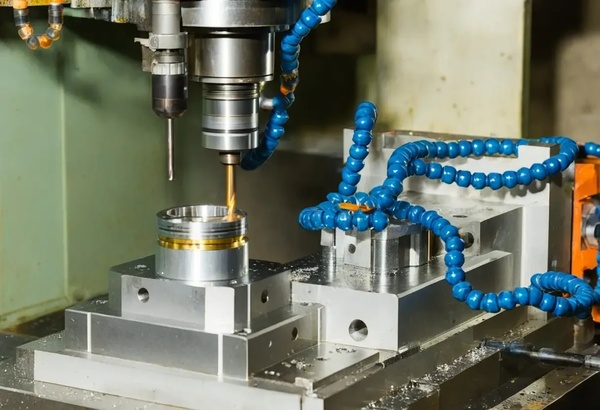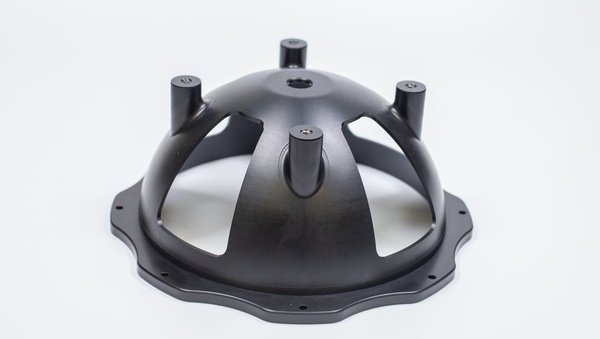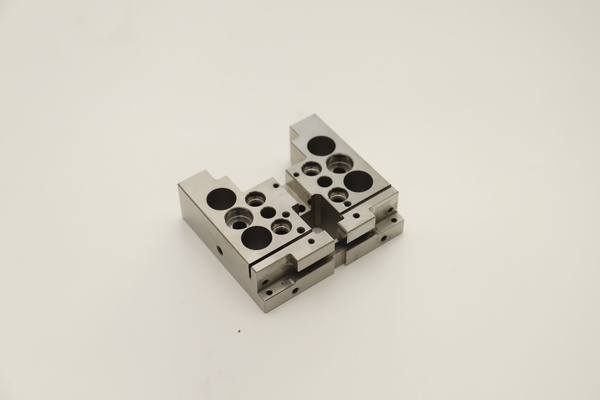A Complete Guide to Aluminum CNC Machining Processes and Materials
Introduction to Aluminum CNC Machining
Aluminum remains one of the most adaptable engineering materials available today. Its excellent machinability, lightweight nature and cost-effectiveness make it the preferred choice for aluminum CNC machining across many industries. Compared with tougher metals like steel or titanium, aluminum can be machined up to four times faster, allowing manufacturers to achieve high output with lower production costs.
Its outstanding strength-to-weight ratio and flexibility make aluminum the go-to material for exterior panels on vehicles ranging from cars and high-speed trains to aircraft and marine vessels. With global industries pushing for reduced emissions and improved fuel efficiency, aluminum has steadily replaced heavier traditional metals in structural and internal components. Its impressive corrosion resistance also removes the need for heavy protective coatings typically required by other materials.
Aluminum is also non-toxic, malleable, and fully recyclable. These characteristics make it ideal for food and beverage containers, foil packaging, trays and many everyday household products.
Thanks to its clean, modern metallic appearance, aluminum is widely used in consumer electronics, including smartphones, laptops, monitors and other premium devices. It also plays an important role in architecture—both as a visual design element and as a structural component.
Taken together, these characteristics make aluminum a material that is lighter than steel, more adaptable than plastic, affordable, abundant and highly reliable—attributes that explain its widespread use in aluminum CNC machining.

This guide covers:
• Where aluminum originates
• What CNC machining is
• Aluminum types used in CNC production
• Aluminum vs. steel machining
• The most common aluminum CNC machining processes
Where Does Aluminum Come From?
Aluminum is the most abundant metallic element in the Earth’s crust. More than 40 million tons are produced annually for use in industries ranging from transportation and energy to consumer goods.
Like most metals, aluminum is found in the Earth’s crust as an ore. Nearly all commercial aluminum originates from bauxite, which typically contains 30%–60% aluminum oxide (alumina). The remaining composition includes silica, iron oxides and titanium dioxide.
A two-step transformation converts alumina into usable aluminum:
1. Extracting Alumina from Bauxite
Most of the world’s alumina is produced using the Bayer Process, invented by Carl Josef Bayer in the late 1800s. Bauxite is crushed into fine powder, mixed with water and heated with caustic soda. The alumina dissolves, allowing it to be filtered and separated.
After crystallizing aluminum hydroxide from the solution, the material is heated and dried to create alumina powder.

2. Smelting Alumina into Aluminum Metal
Alumina is dissolved in a fluorinated bath and broken down by electrolysis into pure aluminum and oxygen. The aluminum is collected, melted in a furnace and blended with recycled materials before being cast into billets, bars, tubes, plates, rods and wires. These forms later undergo CNC machining to create finished components for countless applications.
What Is CNC Machining?
CNC machining integrates traditional manufacturing tools with advanced computer numerical control systems. These systems automate the cutting, shaping and drilling of raw material, delivering precision and repeatability that manual machining cannot match.
CNC machines provide improved accuracy, productivity and waste reduction. The first versions appeared in the late 1940s, while modern CNC systems began emerging in the 1960s with the introduction of computers.
Common CNC machines include milling centers, lathes, drilling systems, and plasma, laser and waterjet cutters. All of them use subtractive manufacturing—removing material from a workpiece to form the desired shape.
What Types of Aluminum Are Used in Aluminum CNC Machining?
Pure aluminum is corrosion-resistant, non-magnetic, and an excellent conductor of heat and electricity. However, it is too soft for most industrial applications. To strengthen it, manufacturers combine aluminum with elements such as zinc, copper, magnesium, silicon and manganese, creating alloys with superior mechanical properties.

The main aluminum types in CNC machining include:
Cast Aluminum Alloys
Cast alloys are formed by pouring molten aluminum into molds. They are affordable, durable, lightweight and tolerant of high temperatures. Automotive components—engine parts, housings, steering columns and structural members—are the largest users of cast aluminum. Other uses include cookware, machinery parts and tools.
Although cost-effective, cast alloys have lower tensile strength and reduced machinability compared with wrought alloys.
Aluminum-Lithium (Al-Li) Alloys
Lithium, the lightest metal, significantly reduces the density of aluminum when alloyed. These high-performance materials are widely used in aerospace structures, including wings, fuselages and turbine components. They also appear in race cars and space applications. Despite weight advantages, Al-Li alloys are costlier and harder to machine, and their fracture toughness is lower than conventional alloys.
Wrought Aluminum Alloys
Wrought alloys are mechanically worked into shape and are the most widely used materials in aluminum CNC machining. They offer superior structural integrity, easier machining performance and better surface finishes compared with cast materials.
Steel vs. Aluminum in CNC Machining
Selecting between aluminum and steel depends on key performance considerations:
1. Cost
Mild and carbon steels typically cost less than aluminum alloys, while stainless steel is more expensive. Global metal pricing, energy and logistics also affect cost. Long-term durability must be considered—short-term savings may result in future expense.
2. Corrosion Resistance
Aluminum and stainless steel resist rust well, but stainless steel is more expensive. Other steel types require protective coatings, adding weight and cost and requiring regular maintenance.
3. Weight
Aluminum is two to three times lighter than steel. With industries pushing for lightweight designs, many steel components have been replaced with aluminum parts.
4. Strength
Steel is stronger and more resistant to deformation under load, heat or force. Aluminum surfaces are more prone to dents and scratches.
5. Machinability
Aluminum machines three to four times faster than steel and cools more quickly, reducing cycle times. Less cutting force is required, extending tool life and enabling the use of smaller CNC machines.
Common Processes in Aluminum CNC Machining
CNC milling is the most widely used technique for shaping aluminum. Rotating tools remove material from a stationary block with exceptional precision. Modern machining centers now include CNC systems, automatic tool changers and multi-axis capabilities (commonly 3–5 axis).
CNC lathes or turning centers rotate the workpiece while tools remove material. They are used for shaping, threading, drilling, tapping and more, offering excellent repeatability and efficiency.
CNC plasma cutters use high-temperature plasma arcs to cut metal sheets up to six inches thick. They offer fast, affordable and accurate cutting across many industries.
CNC laser cutters melt or vaporize material to create smooth, clean edges. They are highly precise for thin sheets but less effective on very thick materials unless using high-power machines.
CNC waterjet machines fire highly pressurized water through narrow nozzles. When mixed with abrasives, they can cut through metals and stone. Waterjet cutting produces no heat-affected zones, reducing material warping and waste.
Xavier is a dedicated manufacturing supplier specializing in aluminum cnc machining and precision CNC subcontracting for a wide variety of metal parts. We offer machining for multiple materials, including aluminum CNC machining, stainless steel CNC machining, magnesium alloy CNC machining, acrylic CNC machining, and ABS CNC machining, as well as high-precision plastic component machining.
Our capabilities extend across diverse industries, delivering reliable CNC solutions for robotics components, aerospace CNC machining, marine hardware, automotive CNC parts machining, and medical CNC components machining. We emphasize accuracy, efficiency, stable quality, and high compatibility for complex part geometries.
To meet different functional and cosmetic requirements, we support a broad selection of finishing processes including sandblasting, hard anodizing, micro-arc oxidation, grinding, polishing, painting, black oxide, electroplating, vacuum coating, chemical plating, phosphating, passivation, silk printing, and texture etching. Popular finishes such as anodizing and electroless nickel plating are also available.
Our machining capabilities cover 5-axis milling services, CNC milling services, CNC turning services, and Swiss turning services, enabling us to support everything from prototypes to mass-production runs.
As a global CNC machining manufacturer, Xavier provides consistent production capacity and competitive pricing. If you are looking for efficient and precise aluminum cnc machining, feel free to reach out to us for customized quotations or technical support.
Some content in this article is sourced from the internet. If there is any inappropriate content, please contact us for removal.